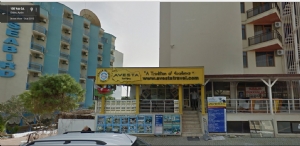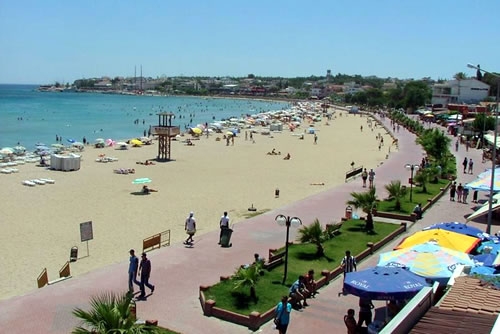The most impressive single monument on the west coast of Ionia, is the Temple of Apollo at Didyma
The most impressive single monument on the west coast of Ionia, is the Temple of Apollo at Didyma. Here, one can see the famous stone relief Head of Medusa. Didyma, like Claros , was never a city in its own right, but a Miletian sanctuary of Apollo inhabited only by priests and the suppliants who came to consult the famous oracle there The word Didyma meant "twins" and was associated by some as being the meeting place of Zeus and Leto to have their twins Apollo and Artemis.
Didyma was famed as a prophecy center dedicated to Apollo which served a similar purpose as the Delphi of Anatolia. It was not a city but a sanctuary linked to Miletus by Milesians with a 19 km / 12 mi sacred road. However, this road may not have been constructed until the end of the 1C AD. In addition to pilgrimages made by sea, some festivals of drama, music and sports were held there every four years. Apollo Temple Even though it is thought that there was a shrine there before the Ionians came in the 10C BC, a temple at the same site was built in the 6C BC, and later destroyed by the Persians in 494 BC. In the 4C BC Milesians started to rebuild the temple but could not complete it because of financial problems. In the 1C and 4C AD Roman emperors tried but could not complete the construction either. Later in the Byzantine period Theodosius II had a church built in the open air courtyard which was destroyed by an earthquake in the 15C AD. Even in its unfinished state the Apollo Temple was regarded as one of the largest temples of the Hellenistic world, comparable to the Artemis Temple in Ephesus or the Heraion at Samos.
almost the same In numbers, found later, today decorate Louvre, Berlin and Istanbul Archaeological Museums. Four smaller samples are to be found in Miletus Museum.
The archaic Didyma temple was completely destroyed during the Persian attacks to 494 B.C., Its treasures plundered, and the valuable Apollo statue, was taken to Ekbatan. The remains of the temple we see today are the remains of the building which was constructed on a larger scale during the reign of Alexander the great and during the Hellenistic period. Seleukos, one of the commanders of Alexander, had even returned the Apollo statue which was taken to Ekbatan to its original abode. The length of the new temple was 60 meters, its height 118 meters; it rises on a platform surrounded in all directions with seven steps. Around the temple were 124 Ionic columns 19.70 meters high, in two rows; 13 large steps lead to the front from where one enters the front hall with 12 octagonal columns whose bases are ornamented, 10 of which belong to the Hellenistic, and two to the Roman periods. Behind the front hall, there is the oracle room 1,5 meters higher than the front hall.
The temple was 110 m / 360 ft long and 51 m / 167 ft wide with a height of 24 m / 78 ft. It is a dipteros in Ionic order with 120 columns 108 of them surrounding the building by a double row and 12 in the pronaos. As George Bean points out in Aegean Turkey, the Apollo Temple "serves as a reminder that vastness in architecture was not purely a monopoly of the Romans". It was an unusual temple, not only because of its huge size but also for its antechamber with two Corinthian columns and two tunnels that led into the cella. The antechamber which was also termed as Cresmographeion probably served as an oracle office where prophecies were written out and delivered to people. In the middle of the temple there is an open air courtyard (adyton) with another Ionic shrine which housed the cult statue of Apollo. There were a few hot springs where the priestess of Didyma immersed her feet or inhaled the water’s vapors for inspiration before prophesying.
The huge Medusa relief standing next to the temple is a 2C AD piece which has fallen off the frieze. A little further stand the remains of an altar and a well. Before asking for a prophesy from the priests in the pronaos, people purified themselves with water from the well and gave votive offerings in the altar. Kings Road - Sacred Road A sacred road, paved with stones was built stretching from Didyma to Miletus and it was covered in four days of walking by those who wanted to visit the temple of Apollo or to appeal to the oracle. On both sides of this sacred road, there were marble statues of Brankhids sitting. Twelve statues of these very famous examples of archaic art, namely 8 men, two women and two lion statues were taken to the British Museum by C.N. Newton in 1858. Another group










